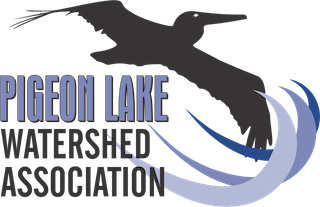1922-1948 - Economy & Development of Pigeon Lake
Increasingly smaller scale logging, farming, sport fishing, cattle and buffalo ranching were supplemented by oil and gas exploration as early as 1922. Other businesses in the area included a macaroni plant, mattress factory, brick factory, fur farm and soft drink plant.
The sale of illegal “moonshine” also flourished in the district during prohibition between 1916 and 1923.
In 1923, one hundred and eighty acres of land was removed from Reserve 138A by the Canadian Department of Indian Affairs, sub-divided and sold off to the public. The area became known as Ma-Me-O Beach, a translation from the Cree word wapiski-mimew meaning “white pigeon.”
The Wetaskiwin Board of Trade and the Edmonton Branch of the Canadian Automobile Association lobbied the province for road improvements and the Social Credit government responded by giving the dirt road “two coatings of gravel” in 1932 and 1934. The work was done by the Commercial Cartage Company under the “Employment Relief Scheme.”
In 1932, anxious to capitalize on the expanding interest in Pigeon Lake property, the Snell brothers who had been logging in the Battle Lake area, arranged the purchase of Crown Land along the south shore of the lake for a development that would later be known as Crystal Springs.
By the late 1940’s, local oil and gas discoveries led to additional jobs and helped push even more expansion of the Summer Villages.
Information gathered from the Crytsal Springs history book.
Hobart Dowler at work in his log yard_1950
The old-growth woods around Pigeon Lake provided ready resources for new settlement. Hobart Dowler, now living at the old mission site, became a much sought after craftsman.

